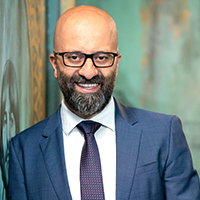At the heart of a patient centred care model is an empowered patient, equipped with all the information and support necessary to make informed decisions about their health. However, with the unique challenges facing today’s healthcare industry, including inefficiencies and rising costs, it is crucial that medical practices embrace technologies that facilitate patient-centred care with greater efficiency, all while reducing clinical risk.
"Automation is defined as the use of control systems and information technologies to reduce the need for human work." – M, Information Systems
Let's explore some examples of how automation in healthcare can be used to improve patient care and reduce clinical risk:
Reduce errors by streamlining information flow
The source of many medical errors is often in the communication lapse between multiple healthcare professionals within the network of patient care. The Impact of Automation of Systems on Medical Errors: Evidence from Field Research study found that the majority of medical errors did not stem from staff incompetency, but rather from the manual transmission of information across different functional units of the care system. It identified that poor systems and processes were the culprit of most of these errors.
Automation can be leveraged to address these errors by better controlling the flow of information. Having more controlled communications allows the implementation of a more cohesive and effective patient care model.
Enable collaborative, real time and simultaneous care from multiple care providers
Positive health outcomes are the result of multiple factors such as the multifaceted relationship between a patient, their physician, the treatment recommended, and how the information is provided. It is clear that a robust care model needs to find the right balance between technology and patient care.
The best digital platforms allow for easy information sharing, including with the patient them self. In particular, cloud-based platforms that are accessible via mobile devices means that information can be reviewed on the go. This enables collaborative, real-time care, ensuring multiple care providers can simultaneously evaluate crucial and up-to-date patient information – ultimately leading to the better patient outcomes.
Furthermore, cutting edge platforms offer intuitive systems that integrate with existing processes. For example, the creation of e-tasks consolidate patient-related care in a central place, complete with necessary documentation and reminders.
Evaluating workflows to highlight areas for improved efficiency and error reduction
Recent research has helped to define precise workflows for physicians working in practices. It revealed that a standard consultation involves 12 main tasks, as well as any number of more than 100 sub tasks that the physician may be required to complete.
By defining each of the tasks within their workflow, this gives physicians a comprehensive framework for understanding the key components of their role, thereby enabling them to understand where inefficiencies and errors may occur.
An example of this may involve determining exactly how many forms or touch points each patient must complete in order to provide all the necessary information that the practice needs. A patient portal or streamlined information gathering process can be put in place to improve the efficiency of gathering patient information as well as ensuring vital or life-saving information isn't omitted.. The use of digital forms can also reduce the risks of human error associated with data entry.
The path to improved patient care
Improved patient care depends on a commitment to streamlining healthcare systems and taking advantage of the numerous benefits of automation in healthcare. This not only improves the patient experience but also gives physicians the time and energy to provide quality care, unhindered by excessive administration or undue risk.
A commitment to always be looking towards new technology and processes combined with modern practice management software provides the path to quality patient care.
For many practices, adopting the mindset of an entrepreneur is exactly the approach that equips them to evaluate and evolve and ultimately produce the best outcomes for patients and practices alike. We’ve developed a guide on how to adopt the key skills of an entrepreneur and build a thriving practice – get your copy by clicking on the image below.
Clinic to Cloud does not provide tax, legal or accounting advice. This material is for informational purposes only and is not a substitute for independent professional advice. You should consult your own tax, legal and accounting advisors before engaging in any transaction. See the Clinic to Cloud Disclaimer for further information.




